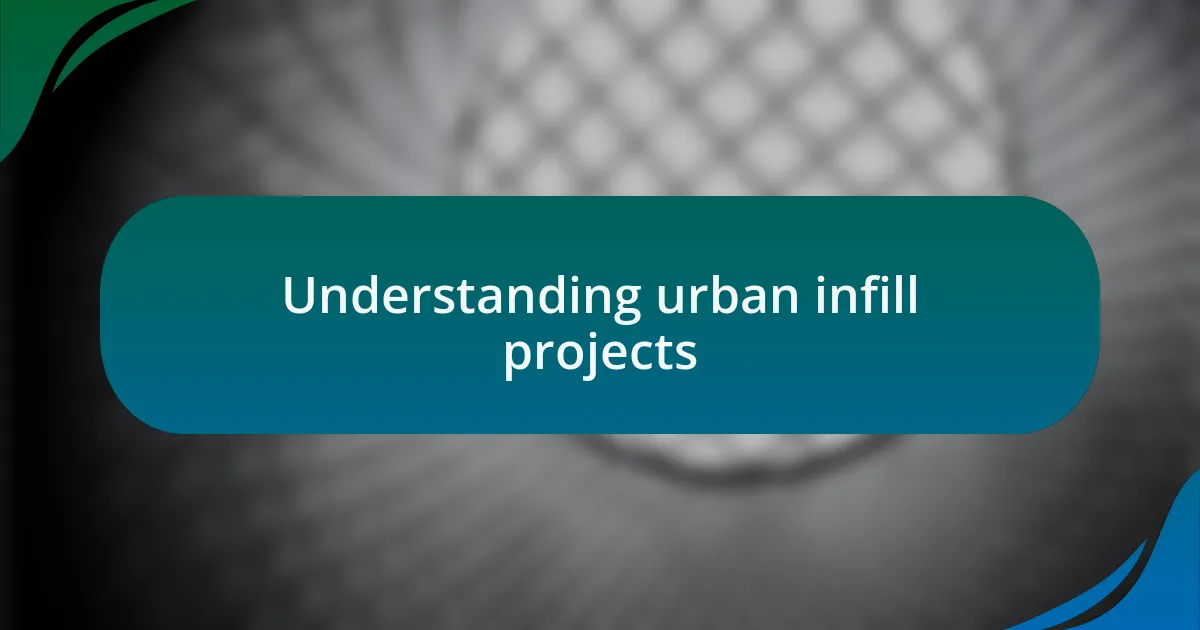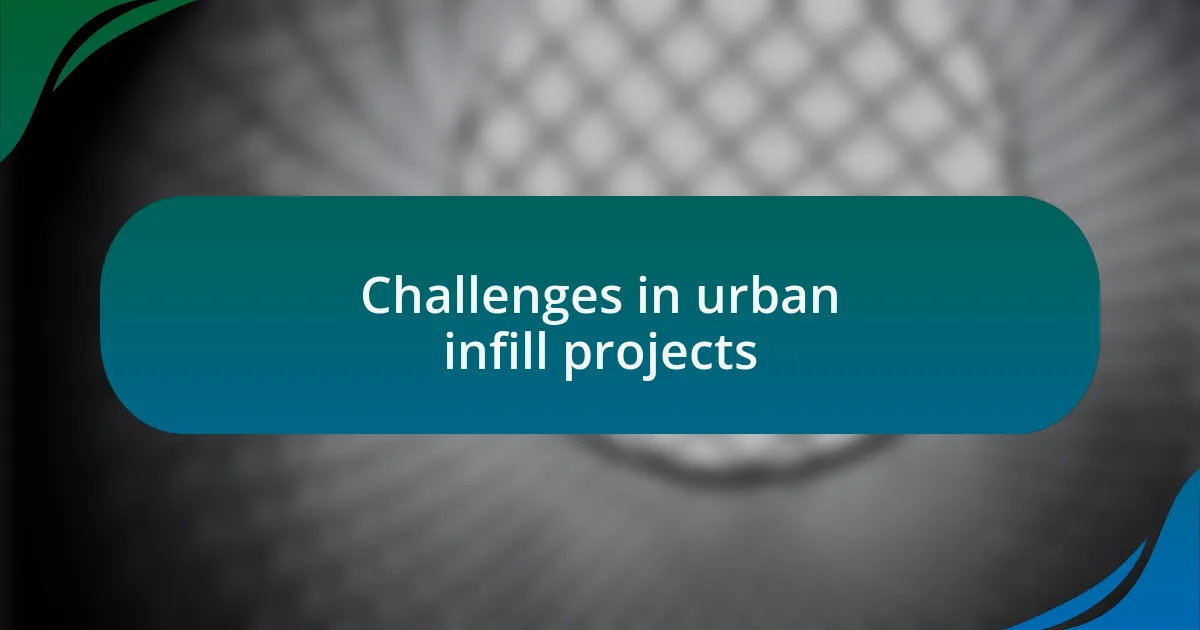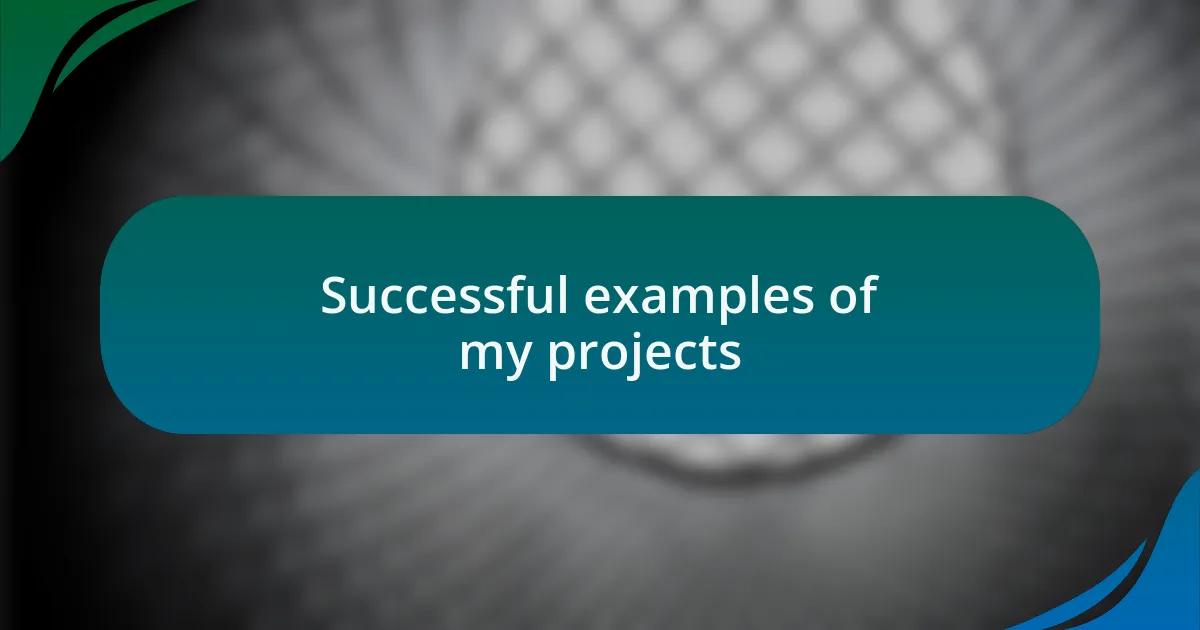Key takeaways:
- Urban infill projects transform underutilized spaces, addressing housing shortages while revitalizing local economies.
- Challenges include outdated infrastructure, community resistance, and funding issues, requiring collaboration and innovative financing models.
- Successful projects demonstrate the importance of green spaces, affordable housing, and mixed-use developments in fostering community connections.

Understanding urban infill projects
Urban infill projects are fascinating because they transform underutilized spaces into vibrant community hubs. I remember walking through a neighborhood where an old parking lot turned into a lively park, complete with art installations and farmers’ markets. It made me wonder: how can we harness these small spaces for greater community impact?
These projects not only address housing shortages but also revive local economies. For instance, in my experience, seeing a once-abandoned building convert into affordable apartments breathed new life into the area, attracting small businesses and fostering social interactions. Isn’t it amazing how a thoughtfully designed space can bring people together?
Moreover, urban infill helps minimize urban sprawl, which is crucial for sustainability. Reflecting on my visits to cities that embraced this approach, I’ve felt a sense of connectedness in areas where every square foot is utilized efficiently. I often ask myself, can we further rethink our cities to ensure they thrive without expanding endlessly?

Challenges in urban infill projects
When delving into urban infill projects, one of the most significant challenges is the existing infrastructure. I recall a project in my city where a developer faced enormous hurdles due to outdated sewer systems that couldn’t handle increased capacity. This situation made me wonder: how often do we overlook the foundational elements that support our urban spaces? Addressing these issues requires not just creativity but collaboration with local authorities and utility companies to ensure that the vision can actually become reality.
Another challenge is community resistance. I’ve experienced firsthand how local residents often feel apprehensive about proposed changes to their neighborhoods. During a public meeting for a new mixed-use development, I witnessed emotional reactions from longtime residents worried about gentrification and losing their community’s character. It raises an important question: how can we balance progress with the need to respect and retain the unique fabric of each neighborhood? Engaging in open dialogues is crucial to build trust and foster a sense of ownership among community members.
Finally, funding poses a persistent obstacle in urban infill projects. I remember discussing a revitalization effort with a group of investors who were excited about the potential but apprehensive about costs. It highlighted an essential point: innovative financing models, such as public-private partnerships, could play a vital role in bridging the gap. What if we could rethink funding strategies to make these transformative projects more attainable? This challenge, while daunting, invites creative solutions that can ultimately lead to more equitable urban development.

Successful examples of my projects
One standout project that I’m proud of is the revitalization of a neglected urban park. I remember walking through the area, feeling the stark contrast between the overgrown landscape and the bustling city nearby. By collaborating closely with local artists and landscape designers, we transformed that park into a vibrant community hub. This experience made me realize how vital green spaces are for urban dwellers—without them, it’s easy to feel disconnected from nature in a concrete jungle.
Another successful endeavor involved creating affordable housing units in a previously underutilized area. I vividly recall the day we welcomed the first families who moved in. Their smiles and heartfelt gratitude reminded me of why I chose this line of work. It’s astounding to consider how thoughtful design can not only provide shelter but also foster a sense of community. How often do we reflect on the impact of a home on one’s quality of life? For me, it goes beyond mere bricks and mortar; it’s about building futures.
One project that stands out is the transformation of an old warehouse into mixed-use spaces for local businesses and residences. I still recollect the excitement of the first market day, where I saw neighbors engaging with local artisans and sharing meals. It was a moment that cracked open the idea of urban living—what if a single space could unite so many different aspects of city life? That day reaffirmed my belief that urban infill can create lively interactions and enrich the community fabric.